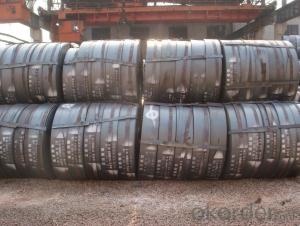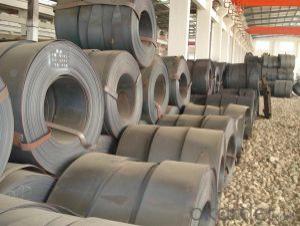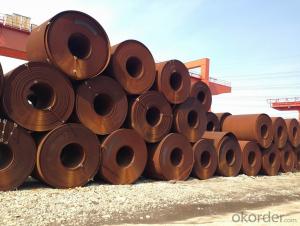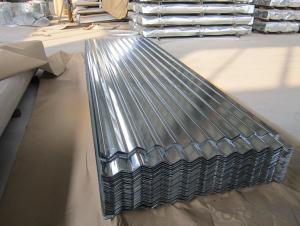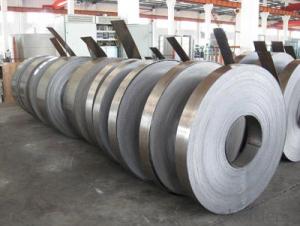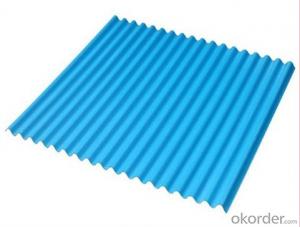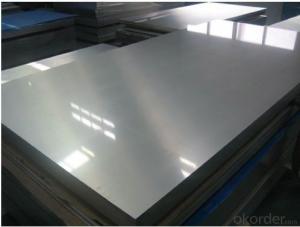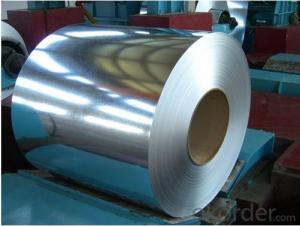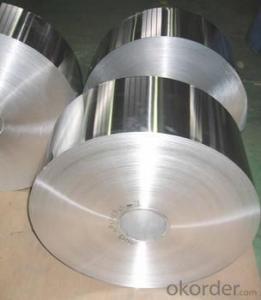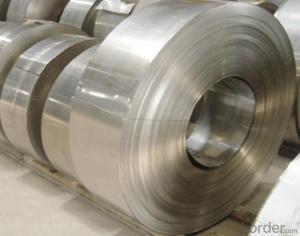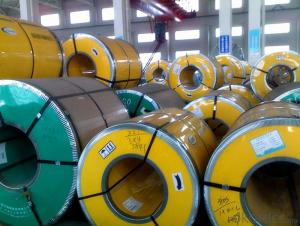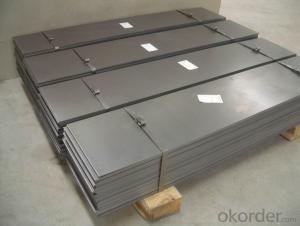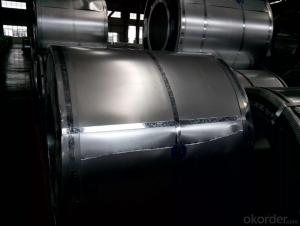Hot Rolled Steel Strip for Spring in Car
- Loading Port:
- Qingdao
- Payment Terms:
- TT OR LC
- Min Order Qty:
- 500 m.t.
- Supply Capability:
- 10000 m.t./month
OKorder Service Pledge
OKorder Financial Service
You Might Also Like
Item specifice
1. Product Description
The Billets as raw materials, through furnace heating, high-pressure water to reduce the phosphorus, then entering the roughing mill, cutting head, end, and then put into the finishing mill, cutting the edge, after the times of straightening, leveling and other finishing line treatment, and then cutting board or coil becomes the hot rolled steel sheet and hot rolled steel coil.
2. Main Features
Characteristics of hot rolled steel hot-rolled steel is a high temperature heating and rolled steel, hot rolled product has high strength, good toughness, easy to processing molding and good weldability and other excellent properties, which are widely used in ship, automobile, Bridges, buildings, machinery, pressure vessels and other manufacturing industries.
3. Excellent Product Image
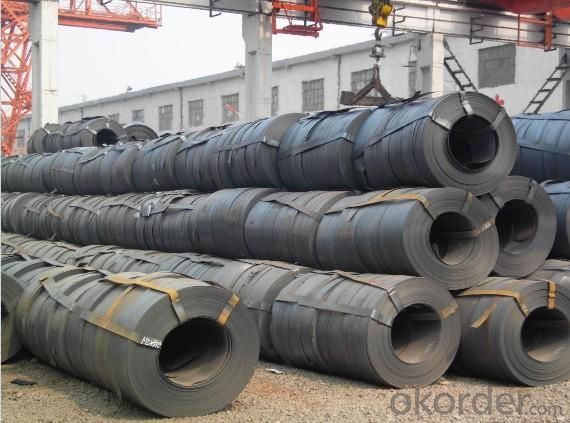
4. Application
Our hot-rolled steel coil and sheet are applied to a wide range of uses such as automobile, electrical appliance, machinery manufacturing, container manufacturing, shipbuilding, bridge, pipeline, and receive high acclaim from our customers for its excellent quality.
5. FAQ
1.Q: Do you have attended any exhibition?
A: We almost go to Canton Fair and Overseas Exhibitions every year.
2. Q: How to guarantee the quality of the products?
A: We have established the international advanced quality management system,every link from raw material to final product we have strict quality test;We resolutely put an end to unqualified products flowing into the market. At the same time, we will provide necessary follow-up service assurance.
3. Q: How long can we receive the product after purchase?
A: Usually within thirty working days after receiving buyer’s advance payment or LC. We will arrange the factory manufacturing as soon as possible. The cargo readiness usually takes 15-25 days, but the shipment will depend on the vessel situation.
Why choose us?
Pre-sale Service
1. Sample can be offered with sample charge and courier fee by buyer's side.
2. We have full stock,and can deliver within short time.Many styles for your choices.
3. OEM and ODM order are accepted, Any kind of logo printing or design are available.
4. Good Quality + Factory Price + Quick Response + Reliable Service, is what we are trying best to offer you
5. All of our products are produce by our professional workman and we have our high-work-effect foreign trust-worthy sales team.
6. We have 18 years' experience of design, manufacture and sell lingerie, we cherish every order from our honor.
After you choose
1. Count the most efficient shipping cost and make invoice to you at once.
2. Check quality again, then send out to you at 1-2 working day after your payment.
3. Email you the tracking no, and help to chase the parcels until it arrive you.
- Q:What are the different types of coatings used on steel strips?
- Steel strips can be enhanced and protected from corrosion by using various types of coatings. These coatings can be classified into three main categories: metallic coatings, organic coatings, and conversion coatings. 1. Metallic coatings: Metallic coatings add a layer of metal onto the surface of the steel strip, providing excellent corrosion resistance and durability. Some commonly used metallic coatings for steel strips include: - Zinc coatings: Zinc coatings, such as hot-dip galvanizing or zinc electroplating, are extensively used to prevent corrosion and prolong the lifespan of steel strips. - Aluminum coatings: Aluminum coatings can be applied through different methods, such as hot-dip coating or aluminum vapor deposition. They offer excellent corrosion resistance, especially in environments where zinc coatings may not be suitable. - Tin coatings: Tin coatings are primarily employed to enhance the appearance of steel strips and provide a thin layer of protection against corrosion. They find applications in the food industry or for decorative purposes. 2. Organic coatings: Organic coatings are composed of polymers or resins and are applied as a paint-like layer on the surface of the steel strip. These coatings offer corrosion resistance and aesthetic appeal. Some examples of organic coatings include: - Epoxy coatings: Epoxy coatings possess excellent chemical resistance and adhesion to the steel surface. They are commonly used in aggressive environments, such as chemical plants or offshore structures. - Polyurethane coatings: Polyurethane coatings provide good abrasion resistance and UV stability. They are frequently utilized in outdoor applications, like construction or automotive industries. - Polyester coatings: Polyester coatings are renowned for their exceptional color retention and durability. They are often employed in architectural applications, such as building facades or metal roofs. 3. Conversion coatings: Conversion coatings involve chemical treatments that convert the surface of the steel strip into a protective layer. These coatings offer corrosion resistance as well as enhanced paint adhesion. Some prevalent conversion coatings include: - Phosphating coatings: Phosphating coatings create a layer of insoluble phosphate crystals on the steel surface, which provides corrosion resistance and promotes paint adhesion. They are frequently used as a pre-treatment before applying organic coatings. - Chromate coatings: Chromate coatings, like hexavalent chromium or trivalent chromium, are utilized to safeguard steel strips from corrosion. They also enhance paint adhesion and are commonly employed in the automotive industry. In conclusion, the choice of coating for steel strips depends on specific application requirements, environmental conditions, and desired performance characteristics. Each type of coating offers distinct advantages and should be selected based on the intended use and desired level of corrosion protection.
- Q:How are steel strips inspected for dimensional accuracy?
- Steel strips are inspected for dimensional accuracy using various techniques and tools to ensure they meet the required specifications. One common method is using a precision measuring instrument, such as a caliper or micrometer, to measure the width, thickness, and length of the steel strip. The measurements are compared to the specified tolerances to determine if the strip falls within the acceptable range. Another method is the use of laser or optical scanning systems that can quickly and accurately measure the dimensions of the strip. These systems can scan the entire surface of the strip and create a digital representation, which is then analyzed to identify any deviations from the required dimensions. In addition to direct measurements, other non-contact techniques like laser profilometry or 3D scanning can be employed to inspect the surface profile and ensure it meets the dimensional requirements. These methods provide a detailed analysis of the strip's surface and can detect any irregularities or deviations from the desired dimensions. Furthermore, automated vision systems can also be utilized to inspect steel strips for dimensional accuracy. These systems use cameras and image processing algorithms to capture images of the strip and analyze them for any variations in dimension. The software compares the obtained measurements with the specified tolerances to determine if the strip is within acceptable limits. Overall, steel strips are inspected for dimensional accuracy through a combination of direct measurements, digital scanning, and automated vision systems. These techniques ensure that the final product meets the required specifications and are crucial in maintaining quality control in the manufacturing process.
- Q:How are steel strips leveled or straightened?
- Steel strips are commonly used in various industries, such as automotive, construction, and manufacturing, and it is crucial for them to be leveled and straightened before further processing. The process of leveling or straightening steel strips involves several techniques to ensure their flatness and accuracy. One of the primary methods used for leveling steel strips is the roller leveling process. In this process, the steel strip is passed through a series of rollers arranged in an alternating pattern. These rollers apply pressure to the strip at specific points, effectively stretching and bending it to remove any unwanted curvature or waviness. The rollers are adjusted accordingly to achieve the desired levelness, and the strip is continuously passed through the rollers until it reaches the desired flatness. Another common method is the stretcher leveling process. In this method, the steel strip is clamped at both ends and then stretched beyond its yield point. This stretching process allows the strip to elastically deform, effectively removing any residual stresses and straightening it. The strip is then released and returns to its original length, but with reduced internal stresses that contribute to its flatness. Precision leveling is another technique used for leveling steel strips. This method utilizes advanced machinery equipped with multiple bending and stretching stations. The strip is passed through these stations, where it is subjected to controlled bending and stretching forces to correct any irregularities. The precision leveling process can achieve high levels of accuracy, ensuring the strip's flatness within tight tolerances. Additionally, laser leveling has emerged as a modern and technologically advanced method. Laser beams are used to scan the surface of the steel strip, measuring its height variations accurately. The collected data is then used to adjust the leveling machinery to remove any deviations and achieve a perfectly flat strip. In conclusion, steel strips are leveled or straightened through various techniques such as roller leveling, stretcher leveling, precision leveling, and laser leveling. These methods aim to remove any unwanted curvature or waviness and achieve the desired flatness, ensuring the quality and usability of the steel strips in different industrial applications.
- Q:What is the tensile strength of a steel strip?
- The tensile strength of a steel strip refers to its ability to resist breaking or becoming permanently deformed when subjected to tension. The strength of the steel strip can vary depending on factors such as the composition of the steel, its processing, and any additional treatments or coatings applied. Generally, steel strips have a high tensile strength, ranging from 400 to 2,000 megapascals (MPa), or 58,000 to 290,000 pounds per square inch (psi). However, the exact tensile strength can vary depending on the specific grade and type of steel being used. Therefore, it is important to consult the manufacturer's specifications or conduct relevant tests to determine the exact tensile strength of a particular steel strip.
- Q:What's the difference between cold rolled strip and cold rolled strip?
- Cold rolled steel sheets are made from hot rolled sheets at normal temperatures. Although they are rolled during processing, they can also cause steel plates to heat up. Nevertheless, it is called cold rolling. Because of the cold rolling of continuous hot rolling, the mechanical properties are poor and the hardness is too high. It must be annealed to restore its mechanical properties. Rolled rolls are generally used to make products without bending or stretching.
- Q:Can steel strips be welded or soldered?
- Yes, steel strips can be welded or soldered. Welding involves melting the steel strips together using high temperatures and a filler material, creating a strong bond. Soldering, on the other hand, uses a lower temperature and a filler metal with a lower melting point to join the steel strips. Both processes can be used to join steel strips securely, depending on the specific requirements and applications.
- Q:Can steel strips be coated or plated?
- Yes, steel strips can be coated or plated with various materials to enhance their performance, protect against corrosion, or improve their appearance.
- Q:What are the environmental impacts of steel strip production?
- The environmental impacts of steel strip production are significant. The process involves high energy consumption, which contributes to carbon emissions and climate change. Additionally, the mining and extraction of iron ore, along with the production of coke and coal, result in habitat destruction and air pollution. Steel strip production also generates large amounts of waste, including slag and mill scale, which can contaminate soil and water bodies. Overall, it is crucial to implement sustainable practices and technologies to mitigate these environmental impacts.
- Q:How are steel strips used in the manufacturing of storage tanks?
- Steel strips are used in the manufacturing of storage tanks as they provide strength, durability, and corrosion resistance. These strips are formed into specific shapes and welded together to create the tank's structure. Additionally, steel strips can be coated with protective layers to prevent rusting and enhance longevity, ensuring the tank's reliability and safety for storing various substances.
- Q:How are steel strips used in the production of lighting fixtures?
- Lighting fixtures for various purposes commonly incorporate steel strips. The creation of the fixture's body or housing is one of the primary applications for steel strips in lighting fixture production. To establish the structure of the lighting fixture, steel strips are frequently shaped, bent, or molded into the desired form. This ensures durability, strength, and stability, enabling the fixture to withstand the weight of its components and external forces. Moreover, steel strips can also be employed in the production of brackets or mounting plates, which secure the lighting fixture to the ceiling or wall. These brackets are crucial for proper installation and positioning, guaranteeing the fixture remains securely fixed in place. In certain instances, steel strips can serve as decorative elements in lighting fixture design. They can be fashioned into intricate patterns, curves, or other designs, enhancing the fixture's aesthetic appeal. Furthermore, steel strips may be utilized to manufacture reflectors or diffusers that regulate the direction and intensity of the emitted light. These components are vital for achieving the desired lighting effect and can be customized to meet specific requirements. Overall, steel strips fulfill a vital role in lighting fixture production, providing structural support, decorative elements, and functional components. Ultimately, this contributes to the overall quality and functionality of the product.
1. Manufacturer Overview |
|
|---|---|
| Location | |
| Year Established | |
| Annual Output Value | |
| Main Markets | |
| Company Certifications | |
2. Manufacturer Certificates |
|
|---|---|
| a) Certification Name | |
| Range | |
| Reference | |
| Validity Period | |
3. Manufacturer Capability |
|
|---|---|
| a)Trade Capacity | |
| Nearest Port | |
| Export Percentage | |
| No.of Employees in Trade Department | |
| Language Spoken: | |
| b)Factory Information | |
| Factory Size: | |
| No. of Production Lines | |
| Contract Manufacturing | |
| Product Price Range | |
Send your message to us
Hot Rolled Steel Strip for Spring in Car
- Loading Port:
- Qingdao
- Payment Terms:
- TT OR LC
- Min Order Qty:
- 500 m.t.
- Supply Capability:
- 10000 m.t./month
OKorder Service Pledge
OKorder Financial Service
Similar products
New products
Hot products
Hot Searches
Related keywords
